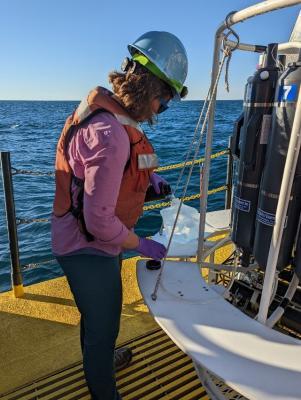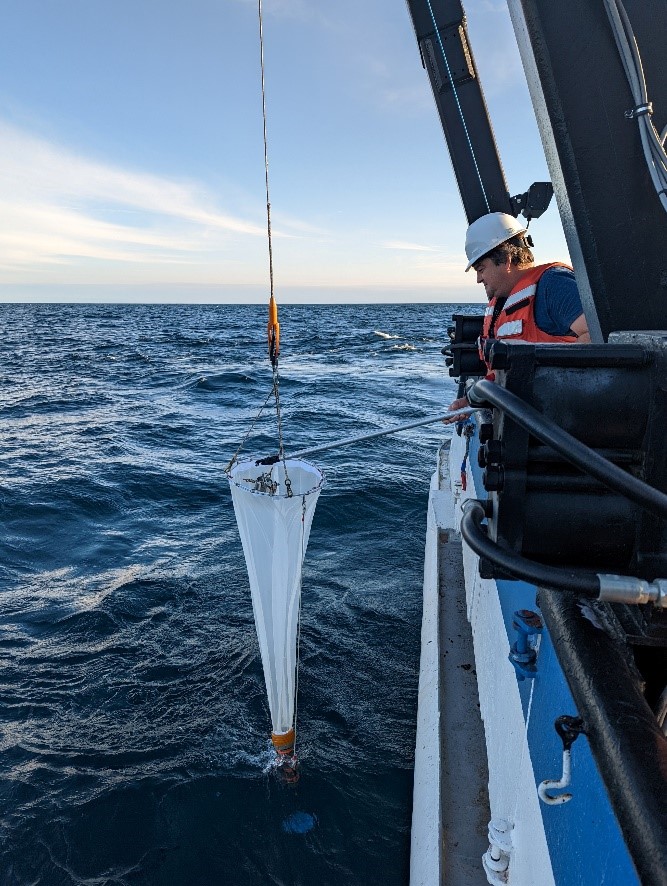In early August, 2023, scientists boarded EPA’s research vessel, Lake Guardian, to begin the 2023 Summer Survey. From August 1 – 29, a comprehensive survey is being conducted across Lakes Michigan, Huron, Ontario, Erie, and Superior to support EPA’s Great Lakes Water Quality Monitoring Program and Great Lakes Biology Monitoring Program. Starting in 1983, these programs annually assess water quality parameters and the health and condition of the lower food web. This year’s Summer Survey marks the 40th year of ecological monitoring for the two ongoing programs. The survey contributes to EPA’s long-term dataset of ecological trends in the Great Lakes.
The Great Lakes Water Quality Monitoring Program collects physical and chemical water quality parameters including water chemistry, nutrient concentrations, and water transparency. Lake water from varying depths is collected using a rosette water sampler onboard the vessel. The water samples are subsequently processed and analyzed for various nutrients, metals, and chemical analytes.
The Great Lakes Biology Monitoring Program focuses on five sampling sub-components including phytoplankton, zooplankton, benthic invertebrates, mysids, and chlorophyll-a. Small bottom-dwelling aquatic animals lacking backbones, known as benthic invertebrates, are sampled from the bottom of each lake using the vessel’s Ponar grab sampler. Phytoplankton abundance and chlorophyll-a concentrations are measured from water samples collected using the rosette. A variety of nets with different mesh sizes are deployed from the ship into the water column to collect zooplankton and small shrimp-like crustaceans called mysids.
These surveys allow EPA to fulfill environmental monitoring and assessment commitments as specified in the Great Lakes Water Quality Agreement between Canada and the United States, and in the Clean Water Act. The RV Lake Guardian is funded by the GLRI. EPA posts updates about the Lake Guardian during sampling season on our social media accounts @EPAGreatLakes on Facebook and X (formerly Twitter). Follow us @EPAGreatLakes on Facebook and Twitter.
GLRI partners participating in the 2023 Summer Survey include:
- U.S. Environmental Protection Agency
- Cornell University
- Buffalo State University
- University of Minnesota Duluth
- Michigan Tech Research Institute
- University of Chicago
- Cleveland State University
- Oak Ridge Institute for Science and Education



